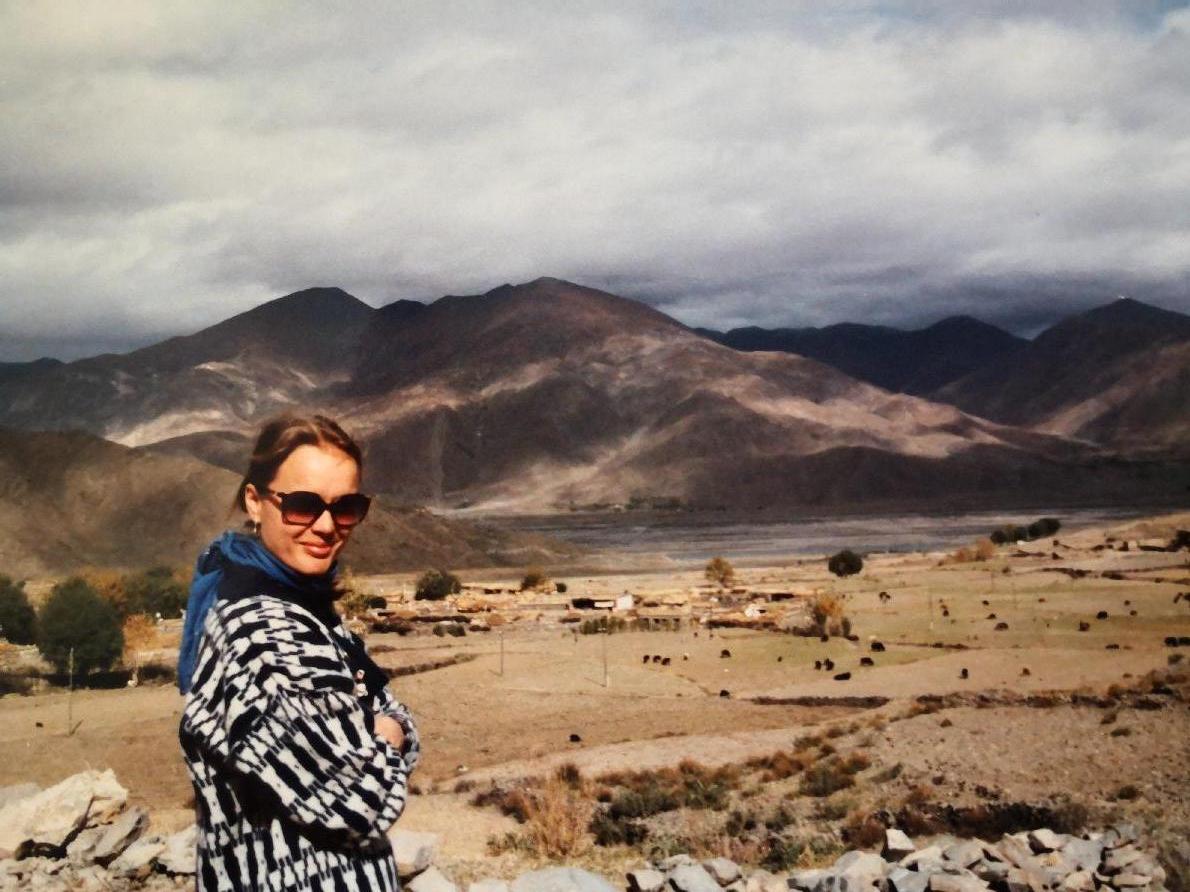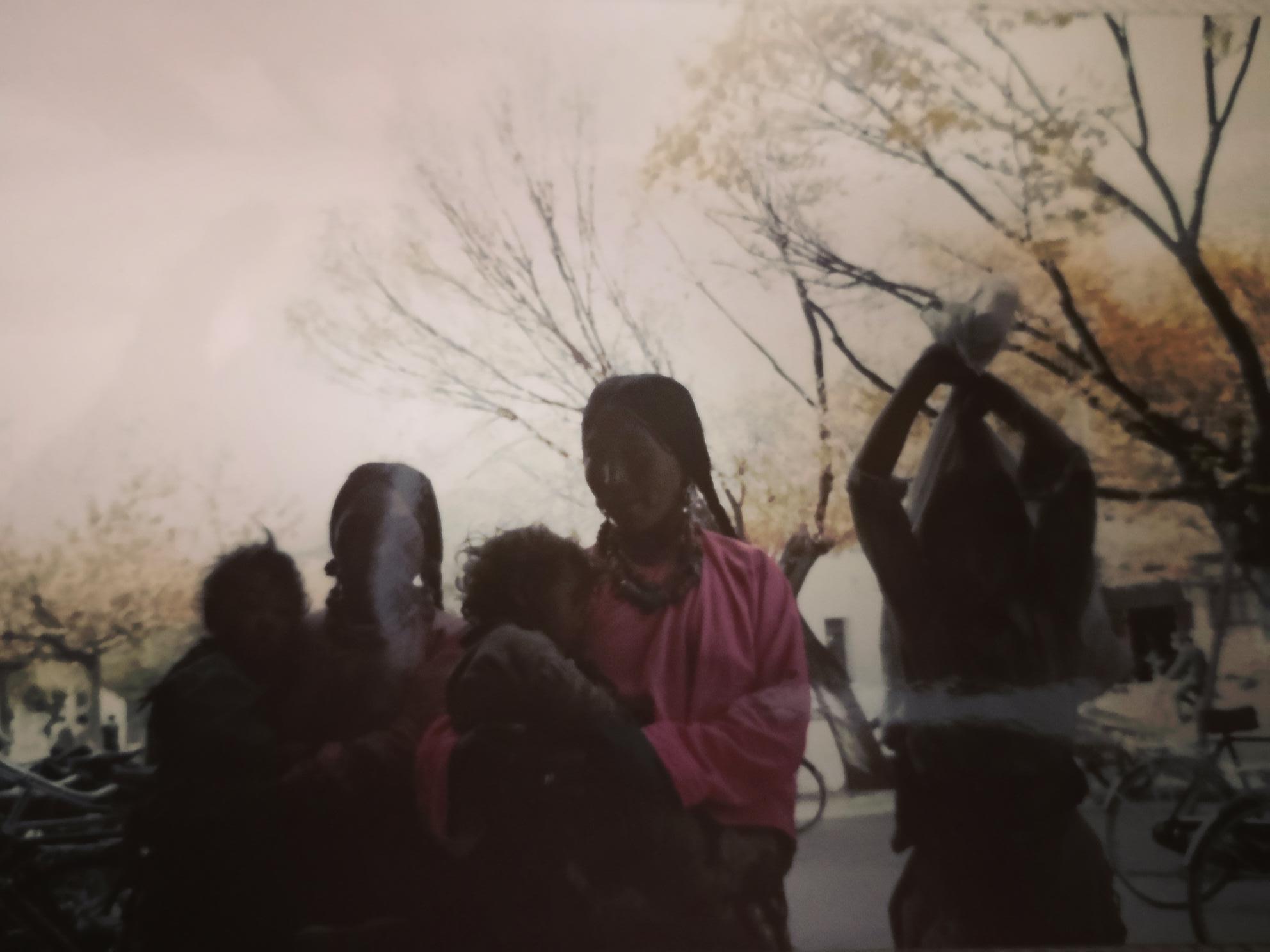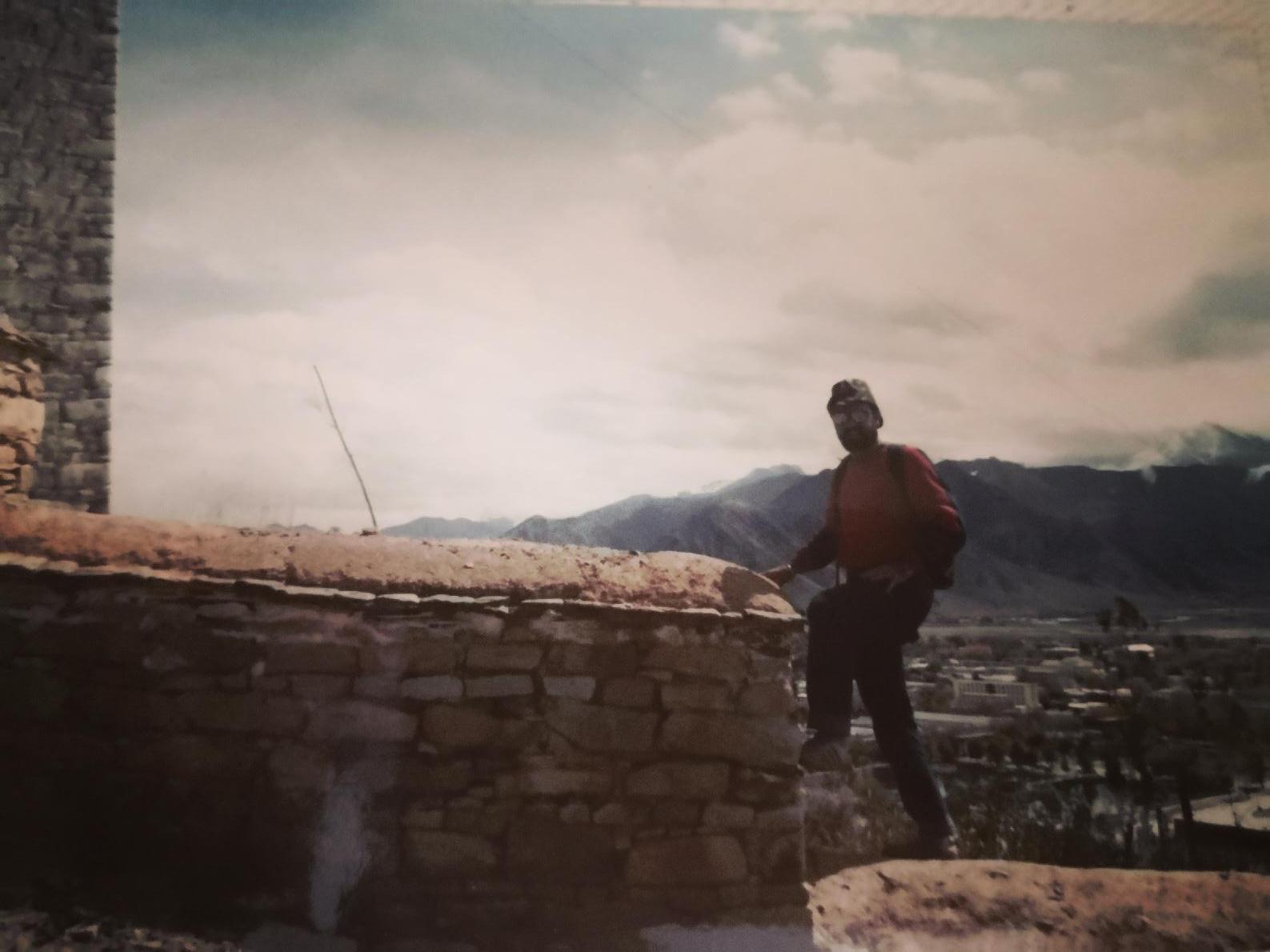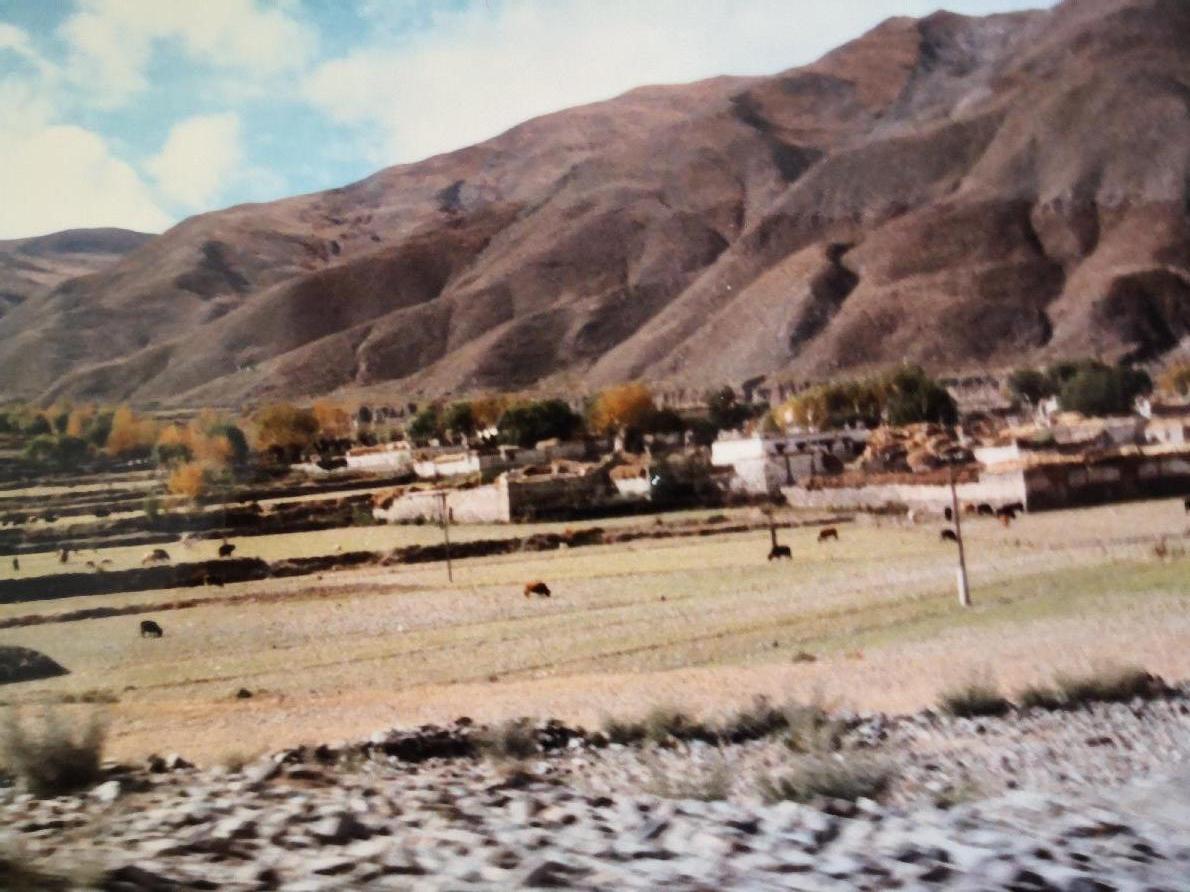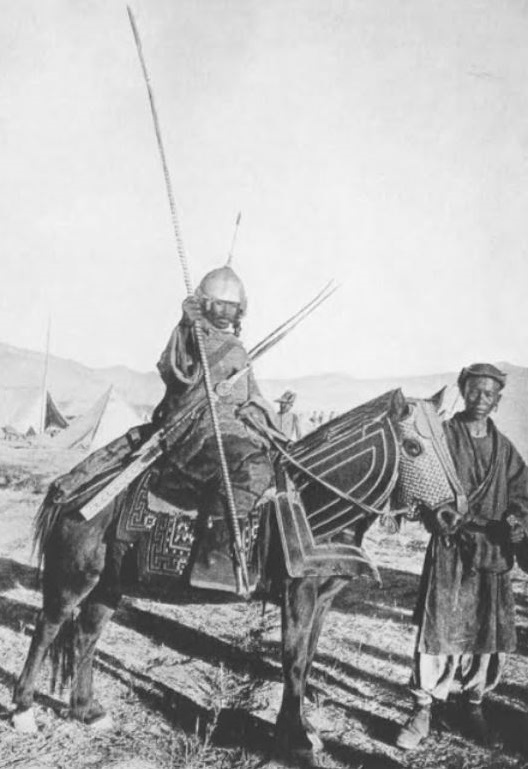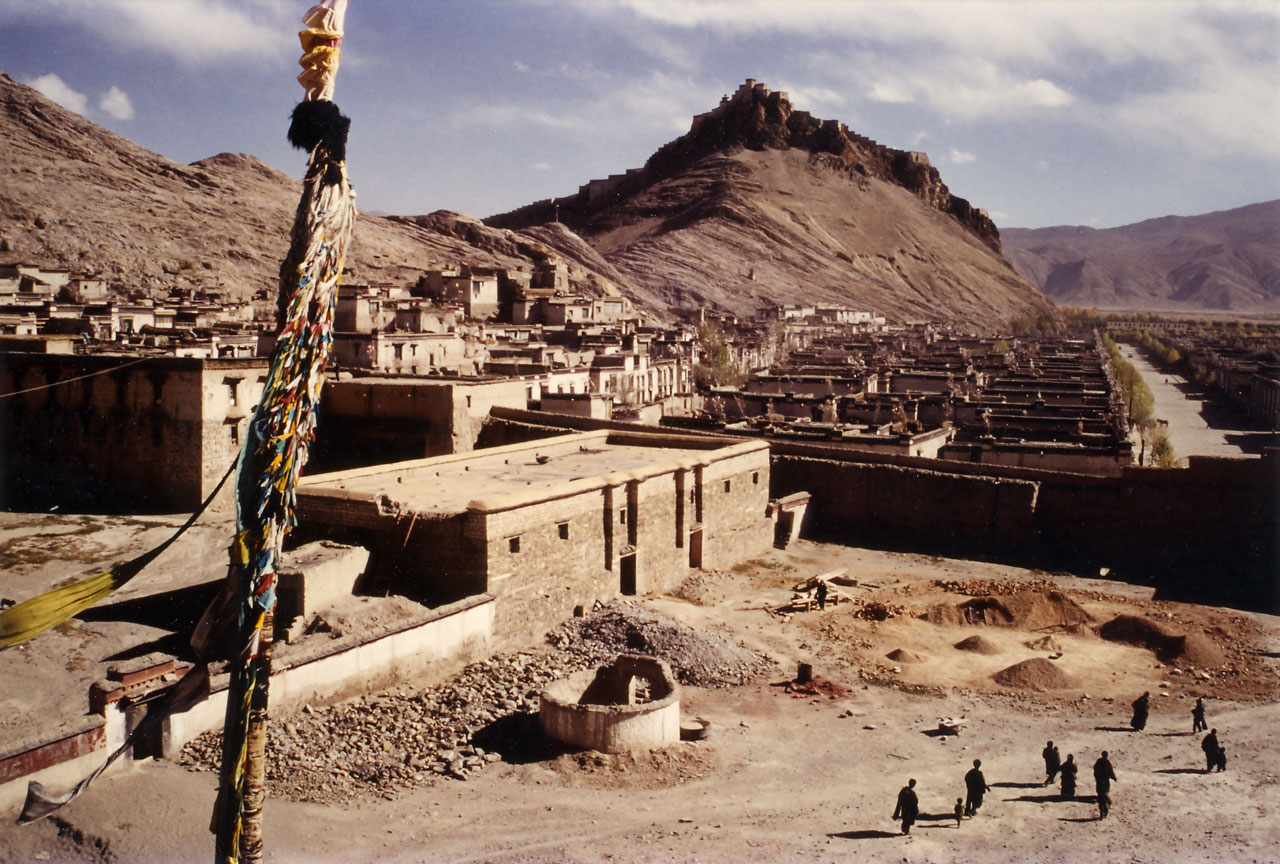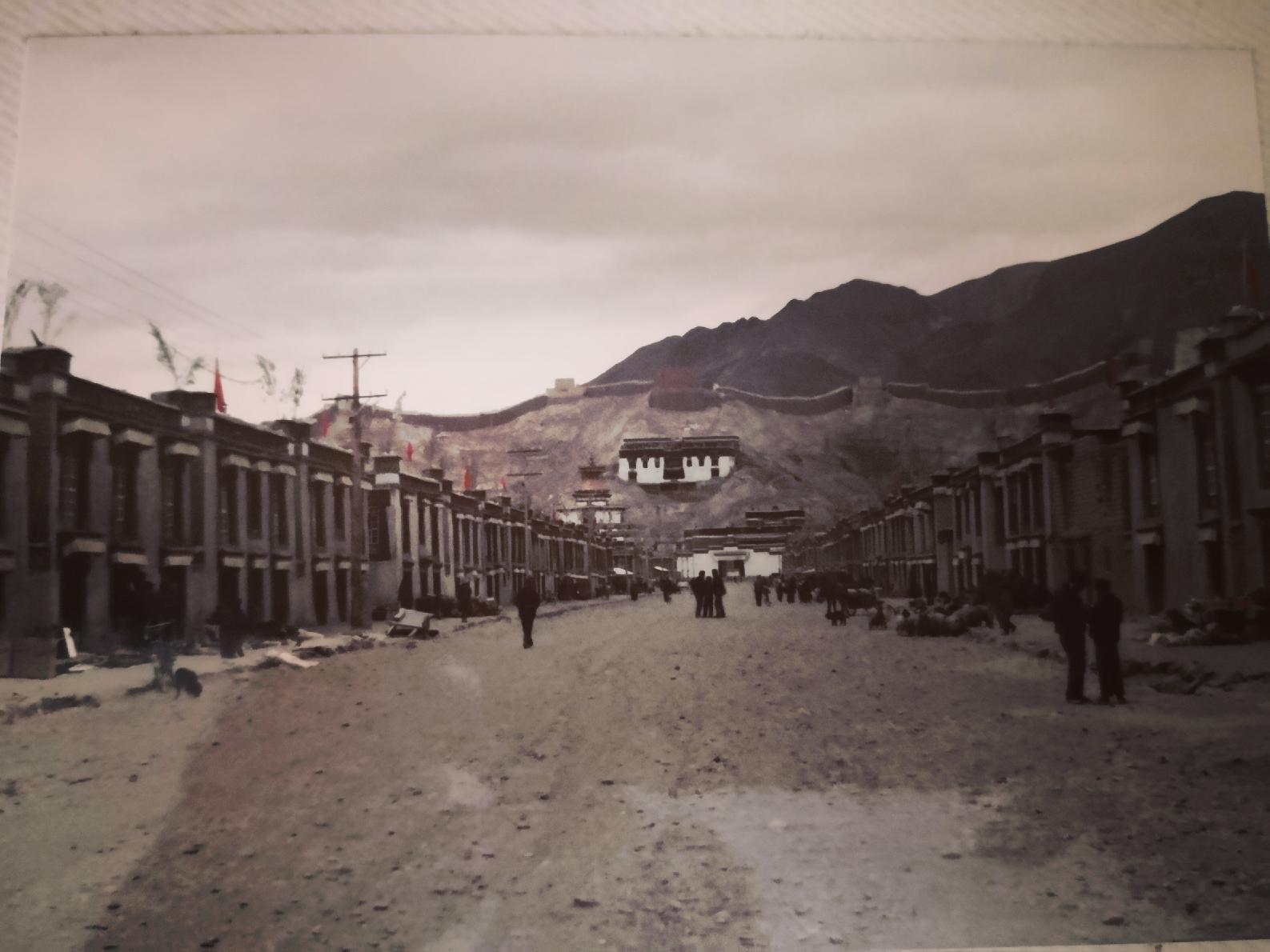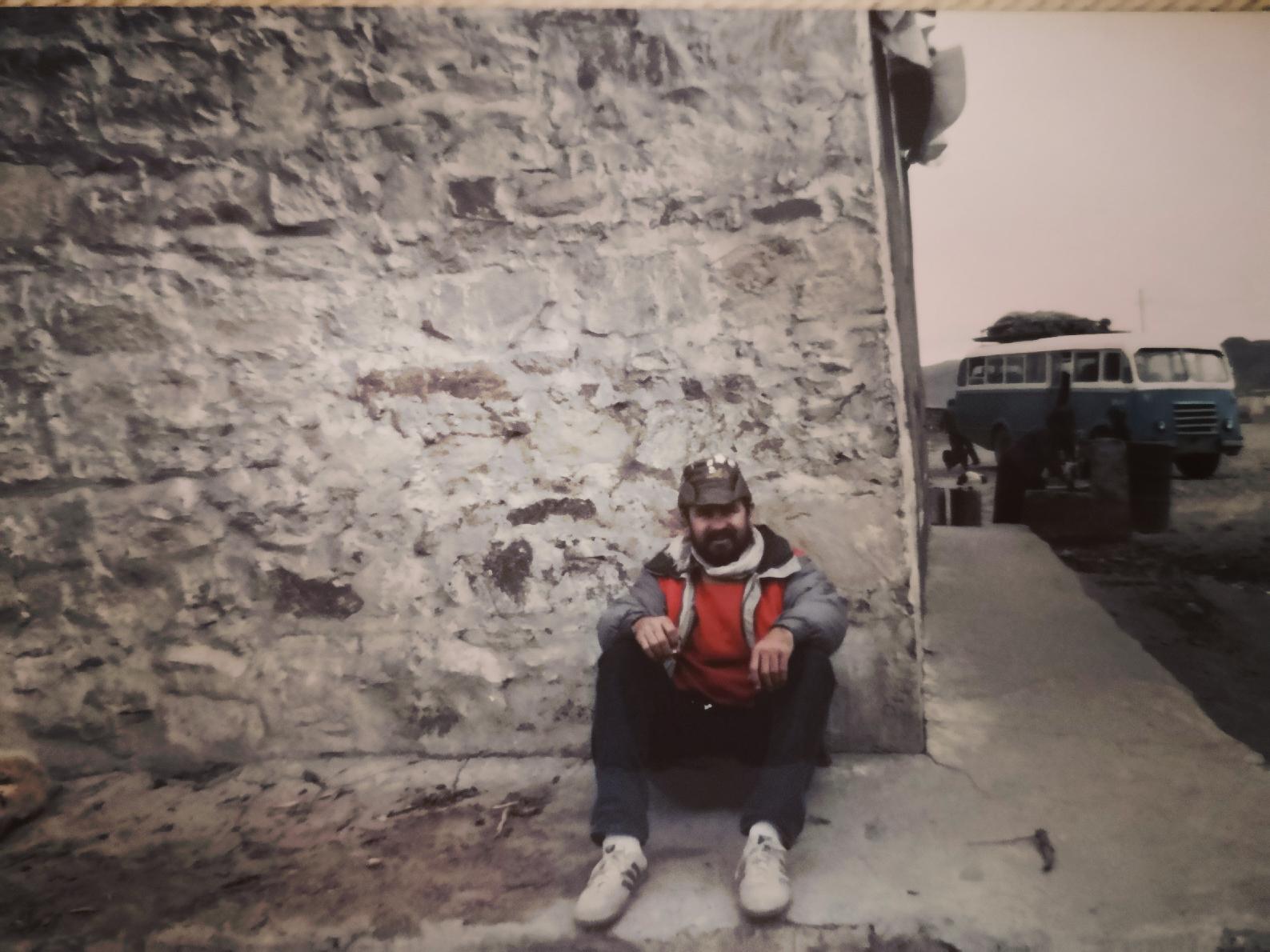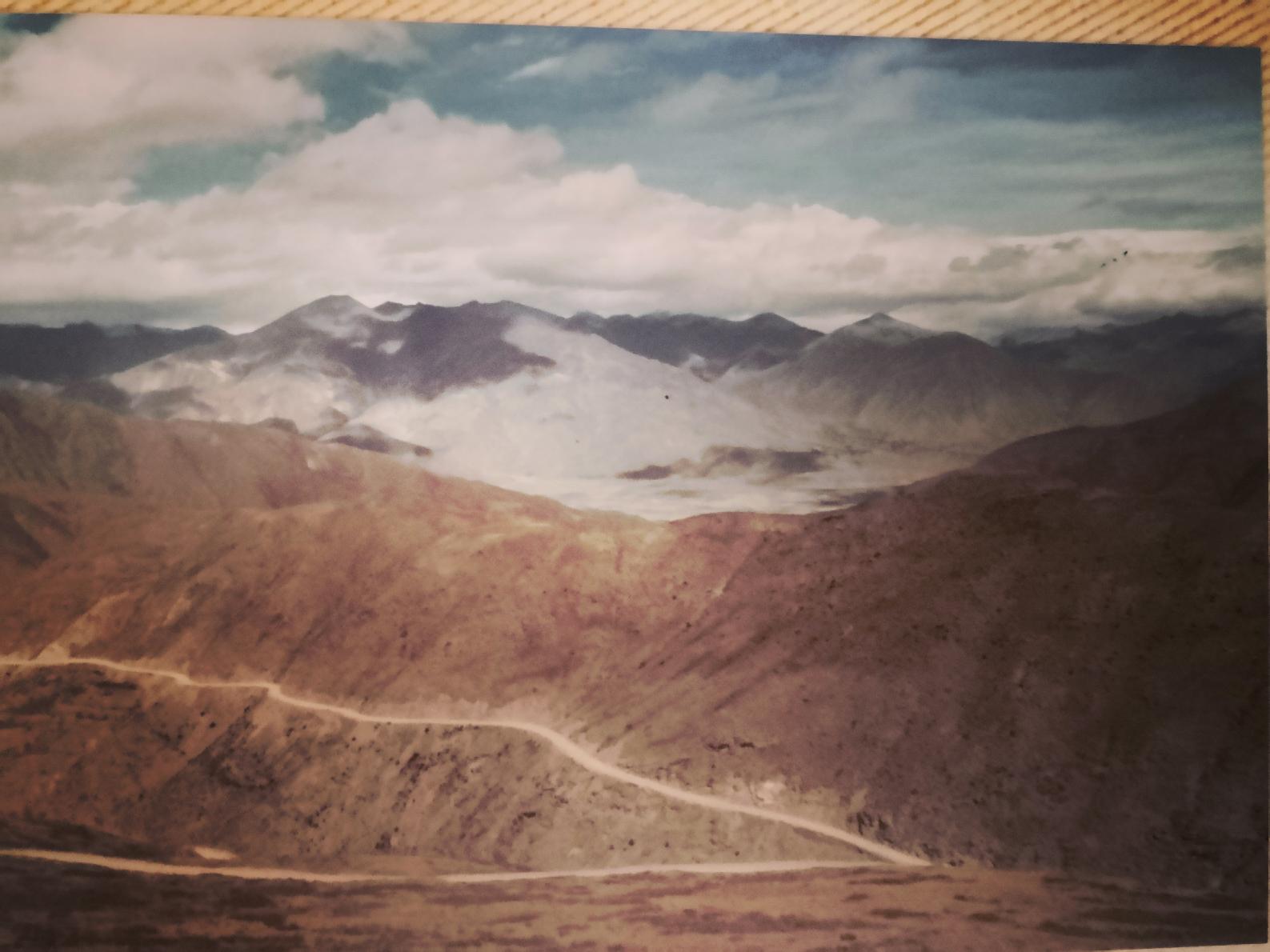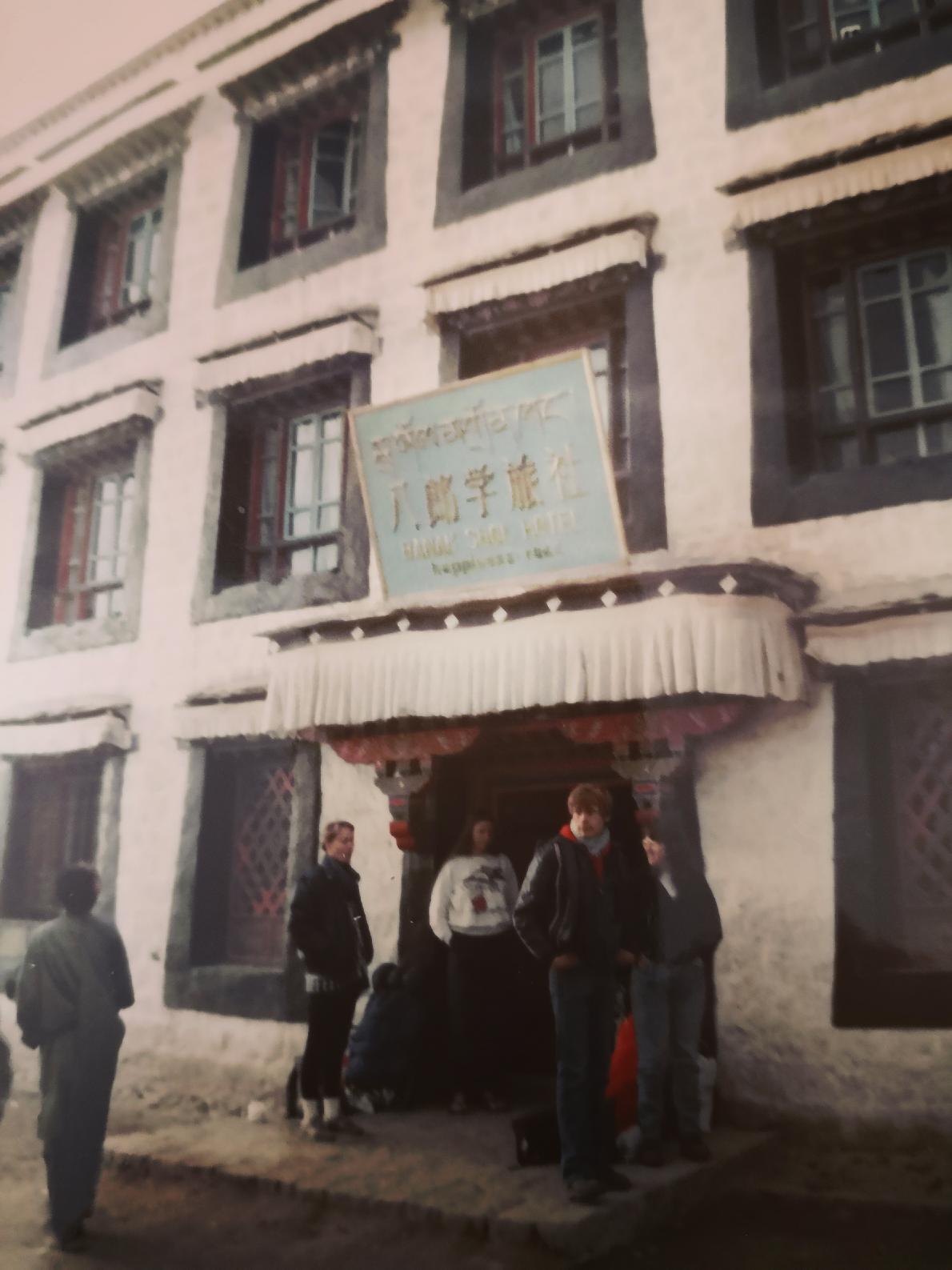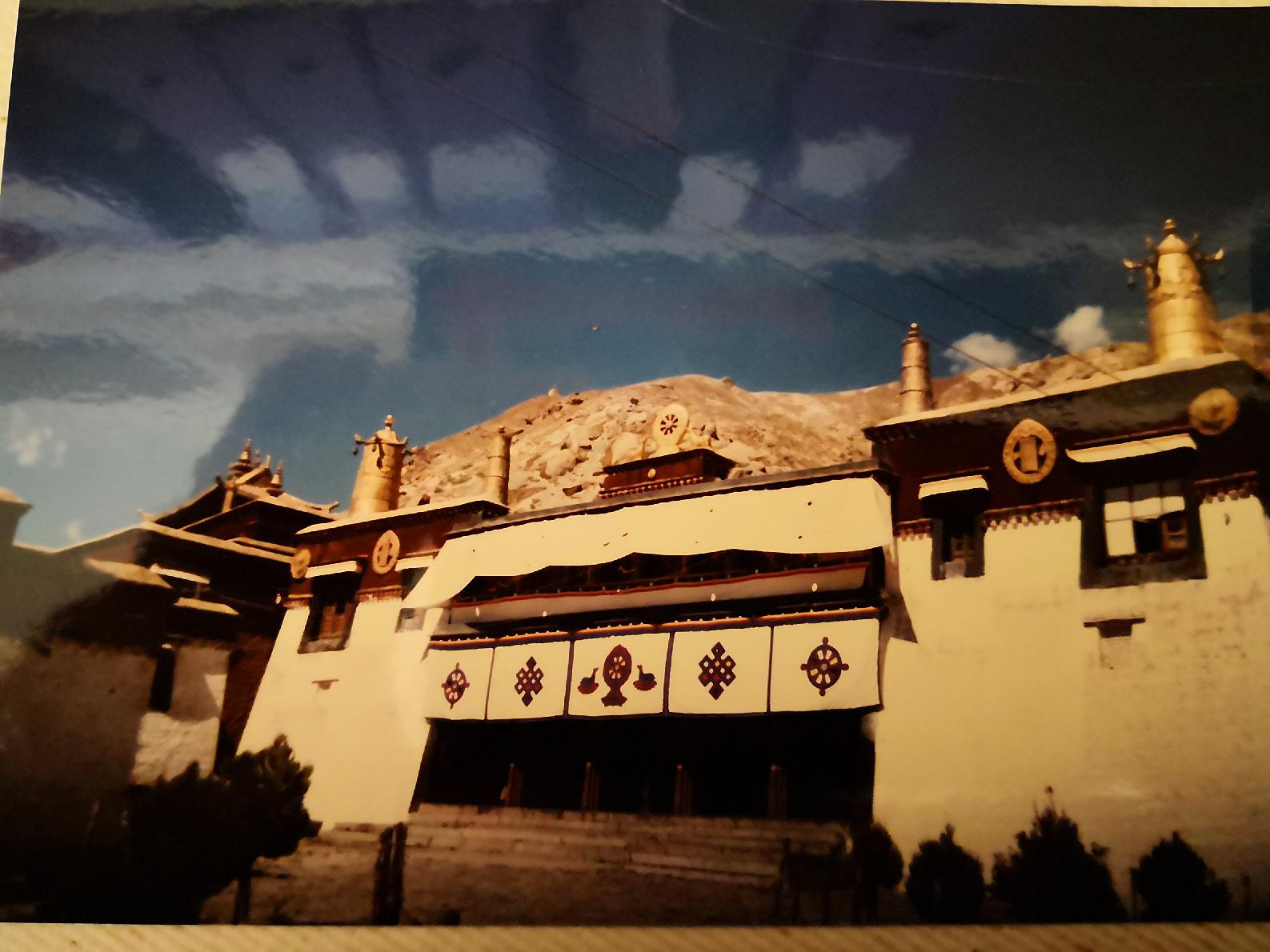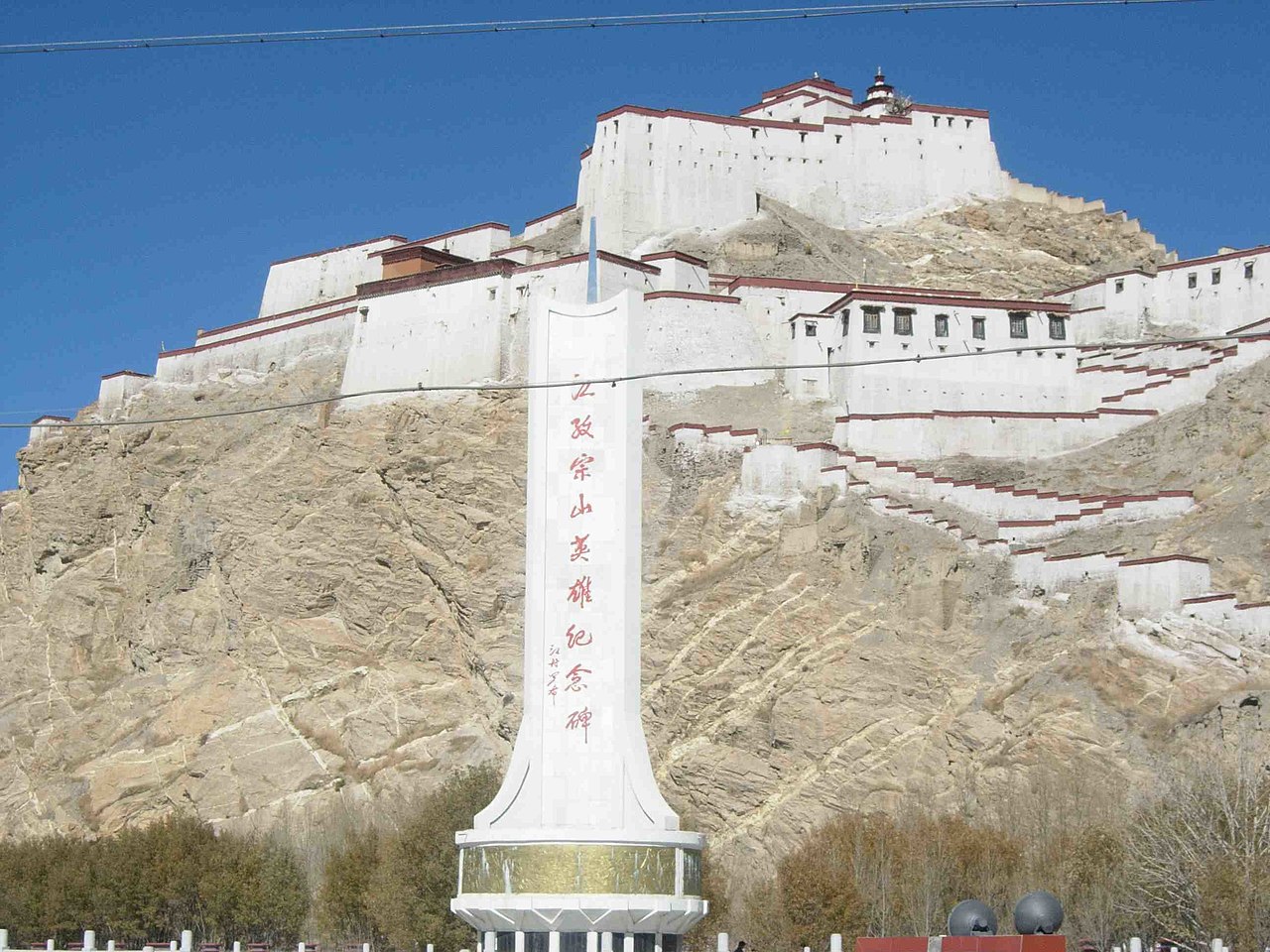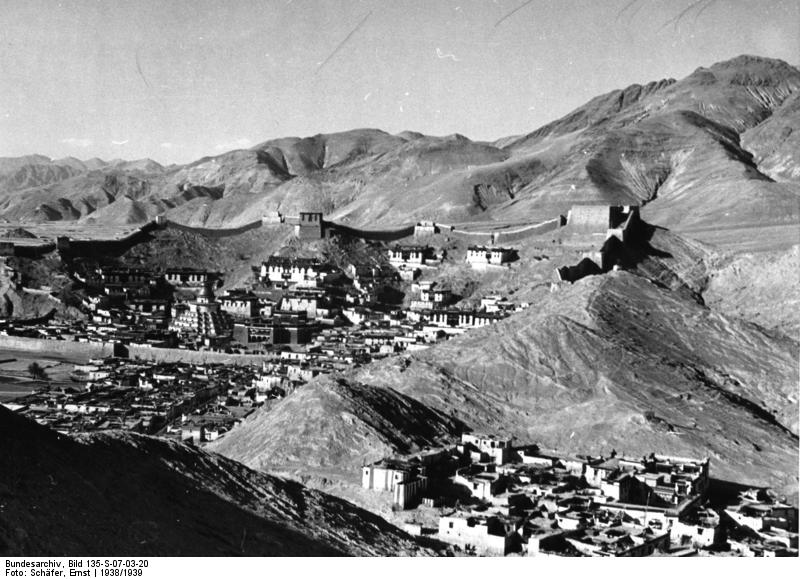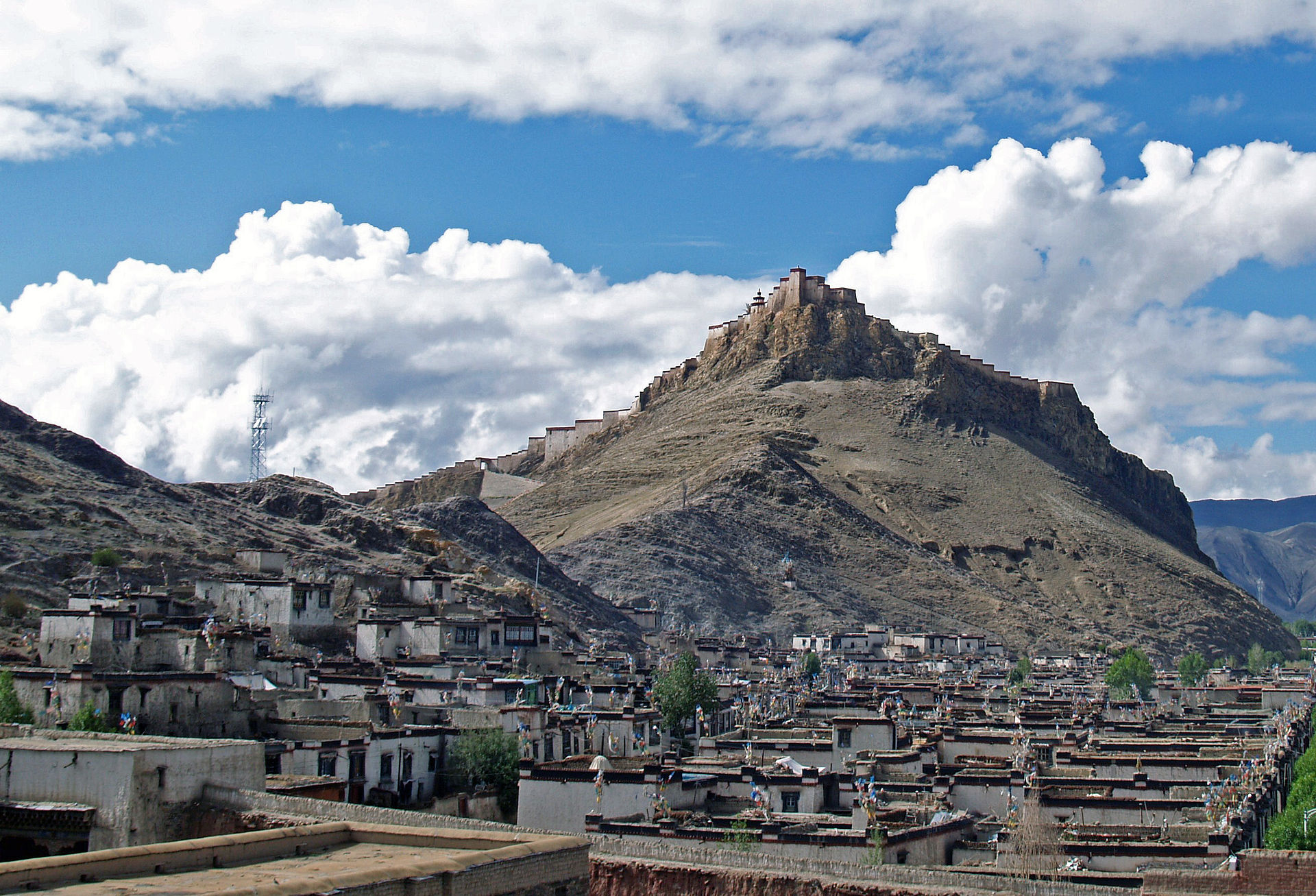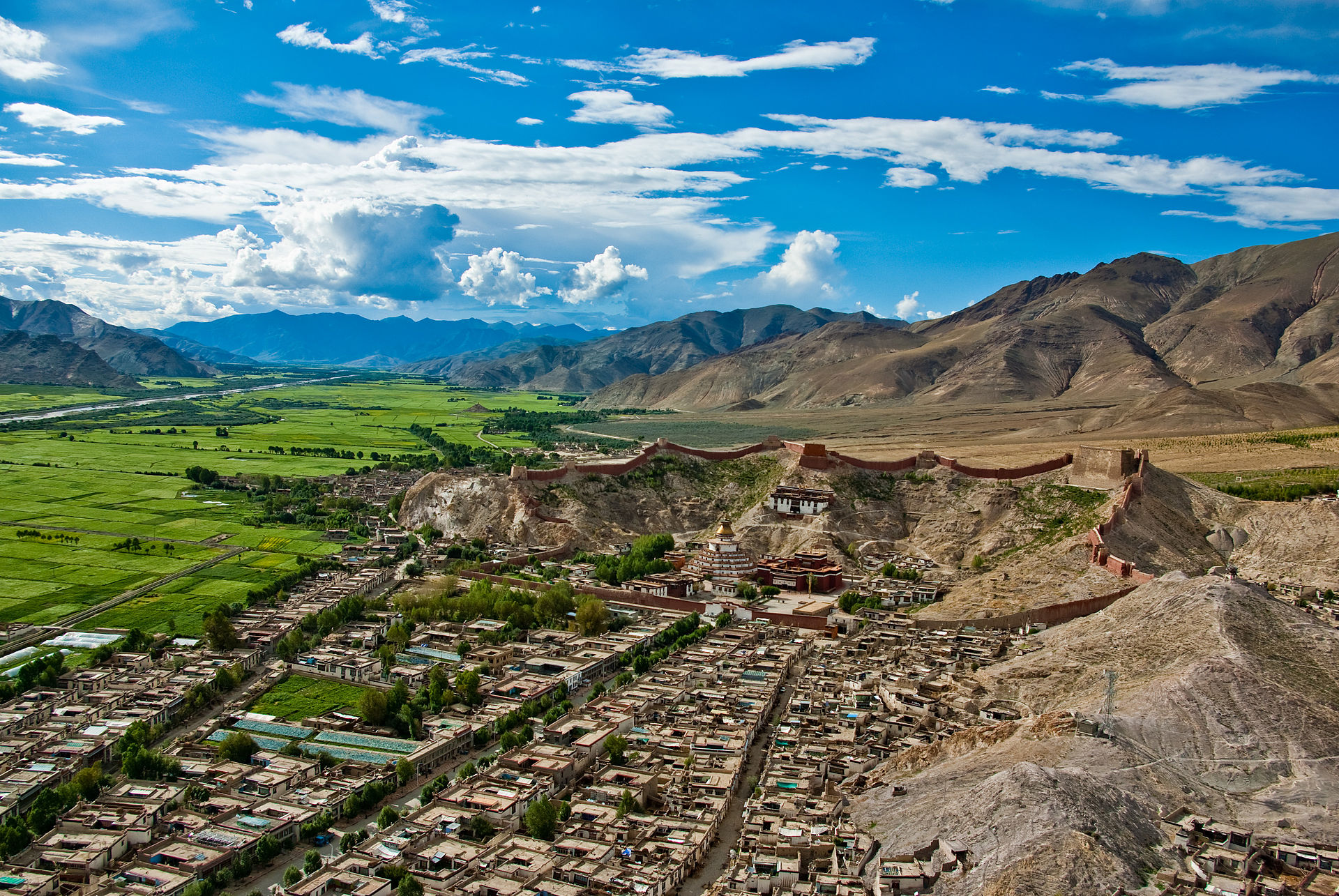
AsianOverland.net
Tour Guide - Itinerary
Asian Overland Sydney to London
Started 22/06/2022 Finished 21/06/2023365 Days ITINERARY
Day 84 date 13/09/2022POTALA PALACE to GYANTSE, TIBET, CHINA
ASIANOVERLAND.NET SYDNEY TO LONDON DAY 84: POTALA PALACE TO GYANTSE, TIBET, CHINA
In 1985, there was no regular bus transport out of Lhasa to Gyantse, Shigatse or towards the Nepal border, so a group of us organised our own charter bus from Lhasa towards the Nepal border. We gathered outside our Lhasa hotel on the morning of our departure and left Lhasa, onto “roads” which were as bad as I’d encountered on previous two overland trips. We travelled offroad through muddy, flooded “paddocks” with the bus tilting and leaning towards the ground as we lurched through massive mudholes. The bus seemed to defy gravity, but we eventually reached Gyantse, in Gyantse County, Shigatse Prefecture, Tibet Autonomous Region, China. Historically, Gyantse was the third largest and most prominent town in the entire Tibet region, after Lhasa, and Shigatse.
Gyantse is strategically located in the fertile plain of the Nyang Chu valley, on ancient trade routes from the Chumbi Valley, Yatung and Sikkim. From Gyantse, trade routes led to Shigatse and Nepal, and also over the Kora La Pass to Central Tibet.
The Gyantse fortress, constructed in 1390, guarded the southern approaches to the Yarlung Tsangpo Valley and Lhasa. Gyantse is 3,977 meters (4 kilometers) above sea level, was surrounded by a wall 3 km long, and is 254 km southwest of Lhasa.
Gyantse has restored its Gyantse Dzong or fort, and its magnificent tiered Kumbum ('100,000 images') of the Palcho Monastery, the largest in Tibet. The Kumbum was commissioned by a Gyantse prince in 1427, and was an important centre of the Sakya school of Tibetan Buddhism. This religious structure contains 77 chapels in six floors, and is illustrated with over 10,000 murals, many showing a strong Nepali influence, which have survived almost entirely intact. They are the last of its kind in Tibet.
The main building of the Pelkor Chode or Palcho Monastery and the Kumbum have been restored but the dzong or fort was in ruins when we visited, having been destroyed by the British. The "Anti-British Imperialism Museum" records the 1904 British invasion, which lasted from December 1903 to September 1904. The so-called “British expedition” was an invasion by British Indian Armed Forces, whose purported mission was to establish diplomatic relations with Tibet. In the nineteenth century, the British had conquered Burma and Sikkim, with the whole southern border of Tibet under the control of the British Indian Empire. Tibet was ruled by the Dalai Lama and Ganden Phodrang government under the suzerainty of the Chinese Qing dynasty.
The British invasion was a “Great Game” move against the Russian Empire's perceived ambitions in the East, and was initiated by Lord Curzon, who said he feared a Russian invasion of British India. In April 1903, the British government received clear assurances from Russia that it had no interest in Tibet:
"In spite, however, of the Russian assurances, Lord Curzon continued to press for the dispatch of a mission to Tibet”.
The “expeditionary” force fought its way to Gyantse, which it destroyed, and eventually reached Lhasa, the capital of Tibet, in August 1904. The Dalai Lama had fled to safety, first to Mongolia and then to China proper.
The Gyantse Dzong was a massively protected fortress for 600 years, defended by the best Tibetan troops and the country's only artillery, and commanded a forbidding position high over the valley below. A British artillery bombardment with mountain guns destroyed parts of the fortress, and the ancient monastic complex at Tsechen, dating from the fourteenth century, was also torched by the British, “to prevent its re-occupation by the Tibetans”.
Pillaging by British soldiers took place at Palkor Chode, Dongtse and other monasteries after the fall of Gyantse Dzong. Contrary to the Hague Convention of 1899, looting was acceptable if the British army felt it had been opposed in any way. According to Major William Beynon, in a letter to his wife on 7 July, 1904, the British pillaging was officially approved.
The British force arrived in Lhasa on 3 August 1904 to discover that the thirteenth Dalai Lama had fled to Urga, the capital of Outer Mongolia. The Amban escorted the British into the city with his personal guard, but informed them that he had no authority to negotiate with them. The Tibetans told them that only the absent Dalai Lama had authority to sign any accord. Eventually, the British intimidated the regent, Ganden Tri Rinpoche, and the Tsongdu (Tibetan National Assembly), into signing a treaty on 7 September 1904, the Convention of Lhasa. It was signed, at Younghusband's insistence, at the Potala Palace. He wrote gleefully to his wife that he had been able to "ram the whole treaty down their throats". British gunboat diplomacy at its best, without the boats.
The British mission departed Tibet in September 1904, having "won", but without receiving any tangible results. The Tibetans were not just unwilling to fulfil the treaty; they were unable to perform any of its obligations. Tibet already accepted its borders with its neighbours, and China had the final say on any international commitments.
In 1906, the provisions of the 1904 treaty were confirmed by the 1906 Anglo-Chinese Convention signed between Britain and China. The British, for a fee from the Qing court, agreed "not to annex Tibetan territory or to interfere in the administration of Tibet", while China agreed "not to permit any other foreign state to interfere with the territory or internal administration of Tibet."
© This work is copyright. Apart from any use permitted under the Copyright Act 1968, no part may be reproduced by any process, nor may any other exclusive right be exercised, without the permission of Peter Searle, peter@portseavillageresort.com; 1980-2024.
Website built by Justin O’Dea www.webdeveloperdocklands.com.au
